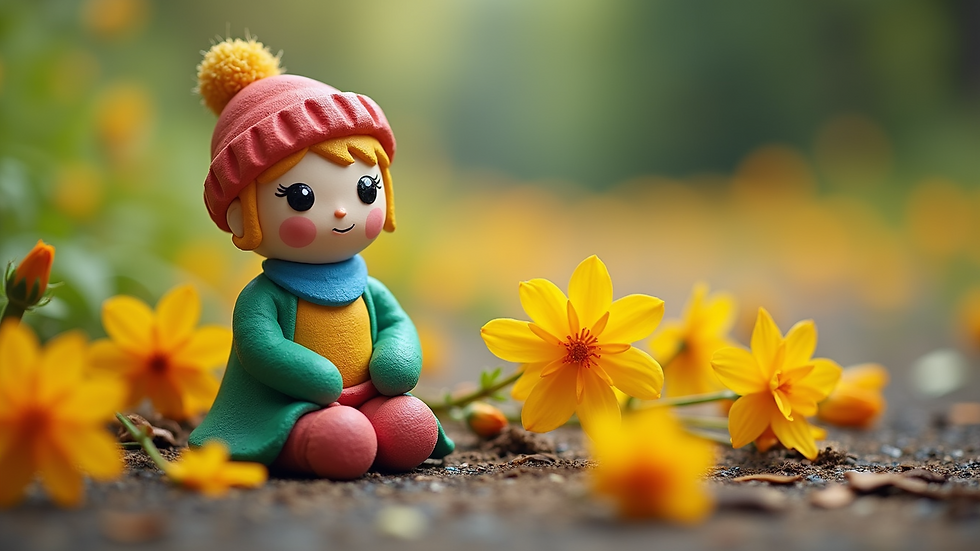Celebrating Eco-Friendly Puja: Embracing Nature in Festival Traditions
- Vritant Baweja

- Jul 12
- 4 min read
Celebrating festivals holds a special place in many cultures across the globe. In India, Puja, or worship, is more than just a religious act. It embodies devotion, gratitude, and community spirit. However, as traditions evolve, we face a pressing need to connect these celebrations with the principles of protecting the environment. By learning how to celebrate Puja in a greener way, we can preserve the sanctity of the occasion while honoring the essence of nature that surrounds us.
The Importance of Eco-Friendly Celebrations
As we prepare for major festivals like Durga Puja and Ganesh Chaturthi, it's vital to consider their environmental impact. Traditional practices often use non-biodegradable items and generate significant waste. In fact, studies show that around 50% of waste generated during these festivals consists of plastic materials. Eco-friendly celebrations aim to reduce this impact by promoting sustainable choices.
By adopting eco-friendly Puja practices, we not only protect our environmental resources but also foster a sense of responsibility within our communities. For example, a survey conducted among participants in eco-friendly festivals indicated that 75% of them felt a deeper connection to nature and their cultural traditions.
Choosing Sustainable Decorations
Decorations form a crucial part of any Puja celebration. Traditional decorations often include plastic and other synthetic materials, which significantly pollute our environment. Instead, switch to natural alternatives like flowers, leaves, and clay to elevate your festivities while protecting our planet.
Natural Flowers and Eco-Friendly Materials
Using flowers such as marigolds, hibiscus, and lotus can beautify your space while being biodegradable. You might also enjoy crafting decorations from organic materials, including plant-based colors and handmade paper, further reducing plastic use.
Additionally, sourcing decorations from local artisans not only supports local economies but also helps in preserving traditional crafts. For instance, buying handcrafted clay items can keep over 30% of plastic decorations out of our landfills.
Eco-Friendly Idols
Idols created from plaster of Paris and synthetic paints can harm aquatic ecosystems during the immersion process. Instead, consider eco-friendly idols made from clay or biodegradable materials. There are even innovative options like seed-embedded sculptures that dissolve harmlessly when immersed.
Plantable Idols: A Growing Trend
A fascinating trend is the use of plantable idols that contain embedded seeds. After the celebrations, placing these idols in soil allows devotees to grow a plant, serving as a beautiful reminder of their devotion. For example, one community in Maharashtra reported that over 1,000 seed idols were planted this year, contributing substantially to reforestation efforts in their area.

Eco-Friendly ‘Prasad’
Prasad is a significant part of Puja, symbolizing offerings to deities. When making prasad, aim to use locally sourced organic ingredients. This approach not only enhances flavors but also reduces carbon footprints tied to transportation, which can account for up to 30% of food-related emissions.
Minimizing Packaging Waste
When purchasing ingredients, choose bulk or unpackaged items to limit waste. Encourage sharing prasad with neighbors in reusable containers. This initiative fosters community spirit while promoting sustainable practices.
Art of Recycling and Upcycling
As we plan our Puja celebrations, waste management must be a priority. Rather than discarding used materials and decorations, embrace creativity through recycling or upcycling.
Creative Upcycling Ideas
Old newspapers can be transformed into vibrant paper mâché decorations, or worn-out fabrics can be repurposed into colorful bunting. Involving children in these activities not only keeps them engaged but also teaches the importance of recycling from a young age.
Water Conservation during Celebrations
Water is a precious resource, especially amid climate change challenges. Be mindful of water use during rituals and prayers. Instead of dipping idols in large water bodies, use a small tub or pot for immersion.
Creating a Sustainable Ritual
Moreover, after rituals that demand water, reuse it for cleaning or gardening tasks. This simple action can prevent wastage and show that every drop counts.
Educating the Community
Engaging the community is essential if we want meaningful changes to take shape. Organize awareness workshops that underline the importance of eco-friendly Puja practices. Share ideas and motivate others to embrace sustainable measures during celebrations.
Building a Sustainable Community
Encouraging discussions about waste reduction and resource conservation during Puja will cultivate a culture of responsibility in neighborhoods. Communities can set a compelling example for future generations, demonstrating how to harmoniously coexist with the environment.
Embracing Eco-Friendly Traditions
Celebrating Puja provides a unique opportunity to express our cherished traditions. By integrating eco-friendly practices, we honor both our customs and the environment that nurtures us. Let this festival season remind us that our love for tradition can go hand in hand with our commitment to nature.
When we embrace eco-friendly Puja practices, we not only create memorable celebrations but also leave a positive legacy for future generations. As we move forward, let us celebrate in a manner that respects and maintains our beautiful planet, ensuring our beloved festivals flourish within the embrace of nature.
In the spirit of Puja, let us merge devotion with responsibility, making each celebration a blessing not only for ourselves but also for our environment.





Comments